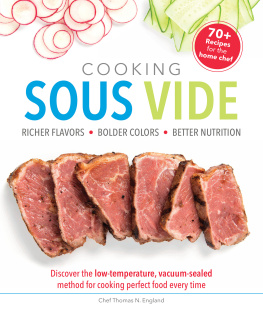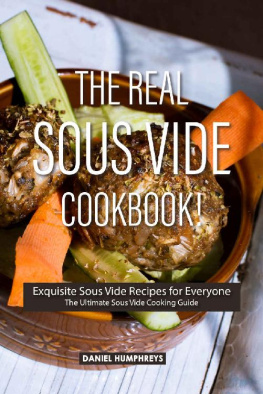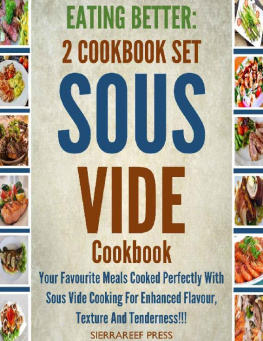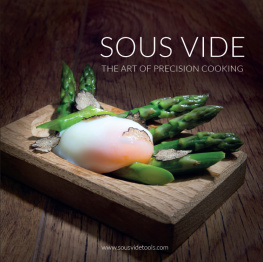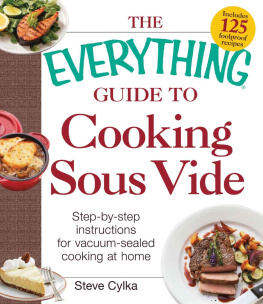
On Cooking
Sixth Edition
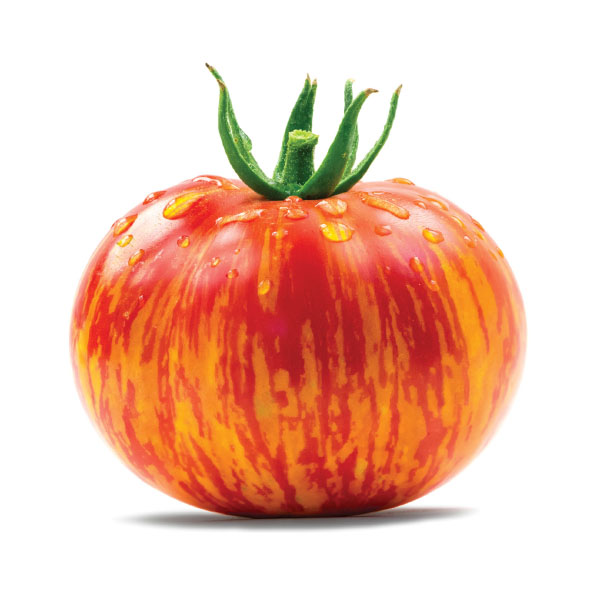
Approach and Philosophy of On Cooking
The sixth edition of On Cooking follows the model established in previous editions, which have prepared thousands of students for successful careers in the culinary arts by building a strong foundation based on sound fundamental techniques. Students and instructors alike have praised On Cooking for its comprehensive yet accessible coverage of culinary skills and cooking procedures. Chapters focus on six areas that are essential to a well-rounded culinary professional:
Professionalism Background chapters introduce students to the field and feature material on food history, food safety and menu planning. Updated food safety information reflects the most recent regulations. A new chapter on the basics of nutrition emphasizes the nutritional impact of cooking.
Preparation Chapters cover the core subjects all culinary students should be familiar with before stepping into the kitchen. Equipment, basic knife skills and mise en place concepts are explained and illustrated. Staple ingredients, such as dairy products, herbs and spices as well as flavor profiles are also presented in this section.
Cooking These chapters explain and then demonstrate fundamental cooking techniques with a wide range of recipes. Individual chapters focus on different categories of key ingredients such as meats, poultry, fish, eggs and vegetables.
Garde Manger These chapters cover kitchen preparations including salads, sandwich making, charcuterie and hors d'oeuvre preparations. Material is of sufficient depth to support a complete unit on garde manger skills.
Baking These chapters cover a range of classic and contemporary breads and pastries that every culinary student should know. The material is sufficient to support a stand-alone unit on breads and dessert preparation.
Presentation Revised chapters on plate and buffet presentation demonstrate traditional and contemporary techniques for enhancing the visual presentation of food. The basics of buffet setup and management are also included in this section.
Updates
More than 225 new photographs and illustrations clearly show core techniques, equipment and foods.
A new Nutrition chapter complements the revised Healthy Cooking and Special Diets chapter, which now includes expanded information on health-related and vegetarian diets.
Content updates, including new recipes, reflect current trends while a new Basic Procedure feature helps students understand and compare core cooking techniques. Expanded coverage of curing and smoking, sous vide cooking and principles of vegetable cookery show students modern cooking techniques widely used in professional kitchens.
New discussions on sustainability and environmental concerns encourage students to consider the impact of their food choices.
Learning objectives, end-of chapter Questions for Discussion and margin definitions are fully linked to competencies required by the American Culinary Federation.
At-a-glance cooking technique callouts highlight core principles, equipment, ingredients and steps. Function of Ingredients sidebars reinforce the science of cooking and baking and explain the uses for certain bakery ingredients.
A greatly enhanced support package includes MyLab Culinary, an online instructors' manual featuring performance-based learning activities, an improved text bank and lecture-based PowerPoint slides.
Visual Guide for the Reader
Easy to navigate, On Cooking is broken down into bite-size subsections as reflected in the table of contents. We invite you to take the guided tour to capture the flavor of On Cooking.
Hallmark Features
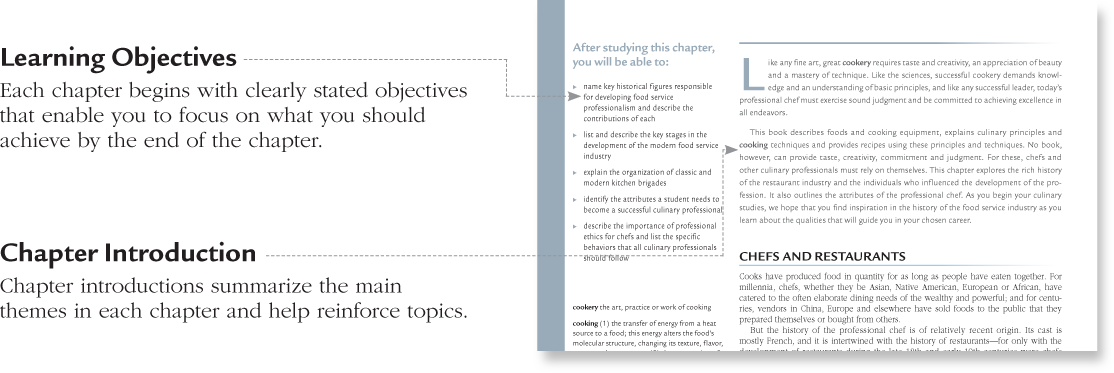
Margin Definitions
Important terms appear in the margins to help you master new terminology. There is a helpful phonetic pronunciation guide for non-English terms.
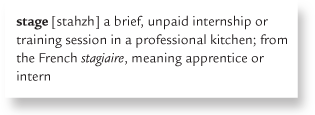
Safety Alerts
Brief notes remind you of safety concerns and encourage you to incorporate food safety and sanitation into your regular kitchen activities.
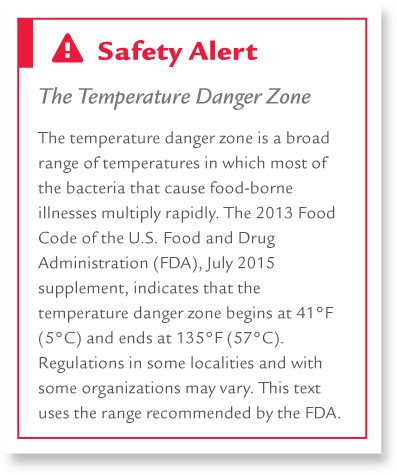
Flavor Sidebars
These sidebars show how flavoring ingredients may be used to change the character of a dish.

Procedures
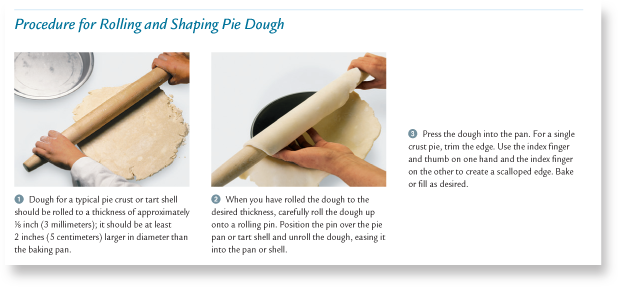
Step-by-step color photographs of various stages in the preparation of ingredients and dishes help you visualize unfamiliar techniques and encourage you to review classroom or kitchen activities whenever necessary.
Product Identification
Hundreds of original color photographs help you recognize and identify ingredients. You can explore a huge variety of items such as fruits, berries, chocolates, fresh herbs, fish, dried spices, game, meats and fine cheeses.

Mise en Place
French for put in place, this feature accompanying in-chapter recipes provides a list of what you must do before starting a recipe, such as preheating the oven, chopping nuts or melting butter.
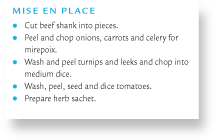
Line Drawings
Detailed line drawings illustrate tools and equipment without brand identification. Other drawings depict the skeletal structure of meat animals, fish and poultry.
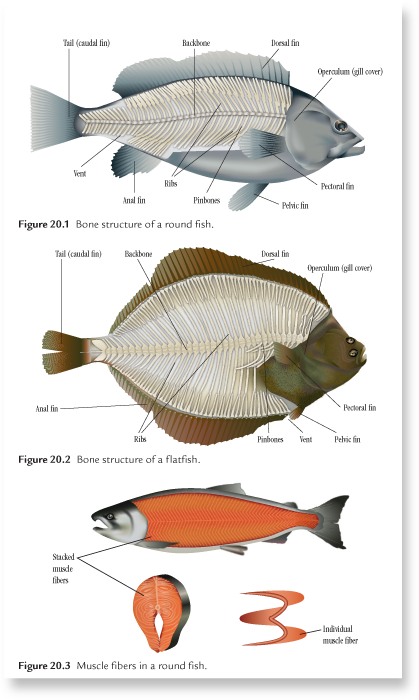
Icons
Icons identify recipes that are vegetarian, vegan or good choices for health-conscious diners.



Recipes
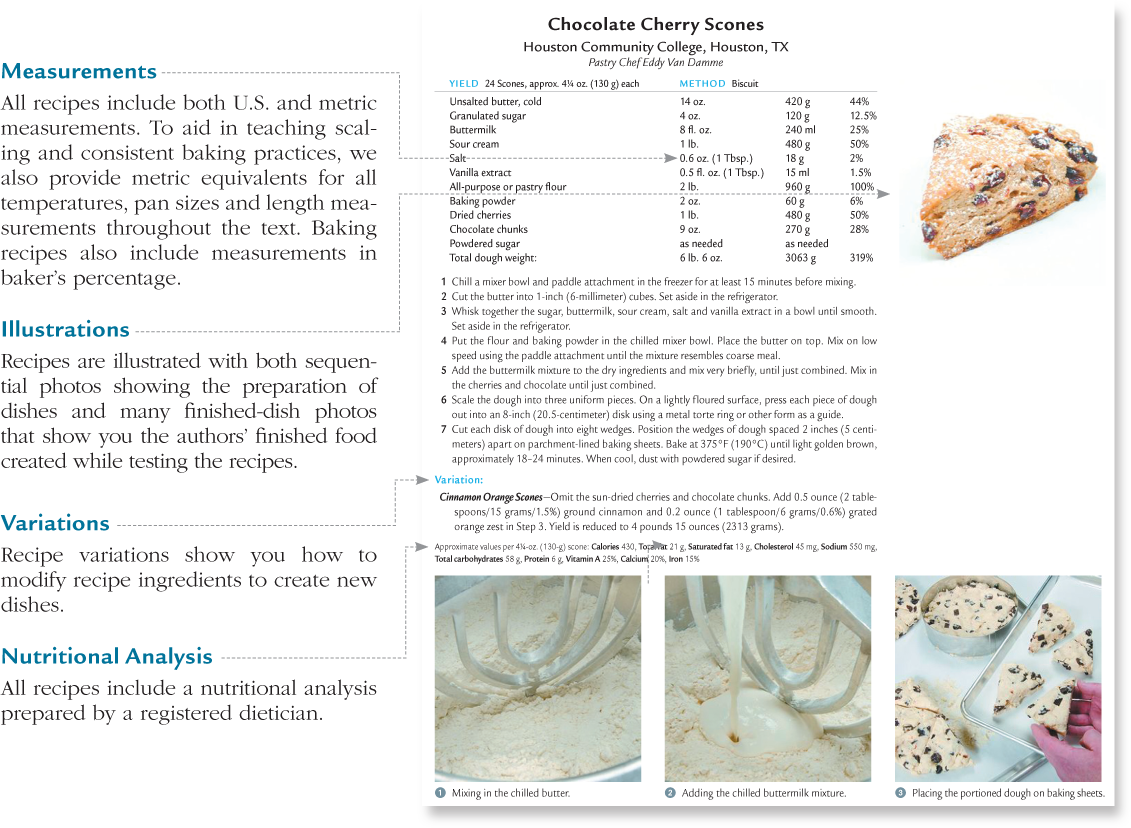
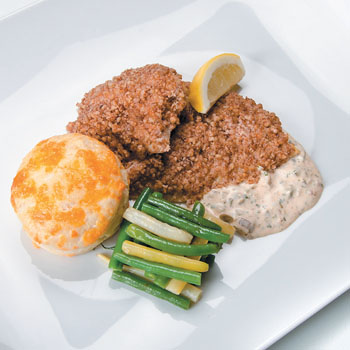
Finished dish photos illustrate ways to present the recipe.
Next page


